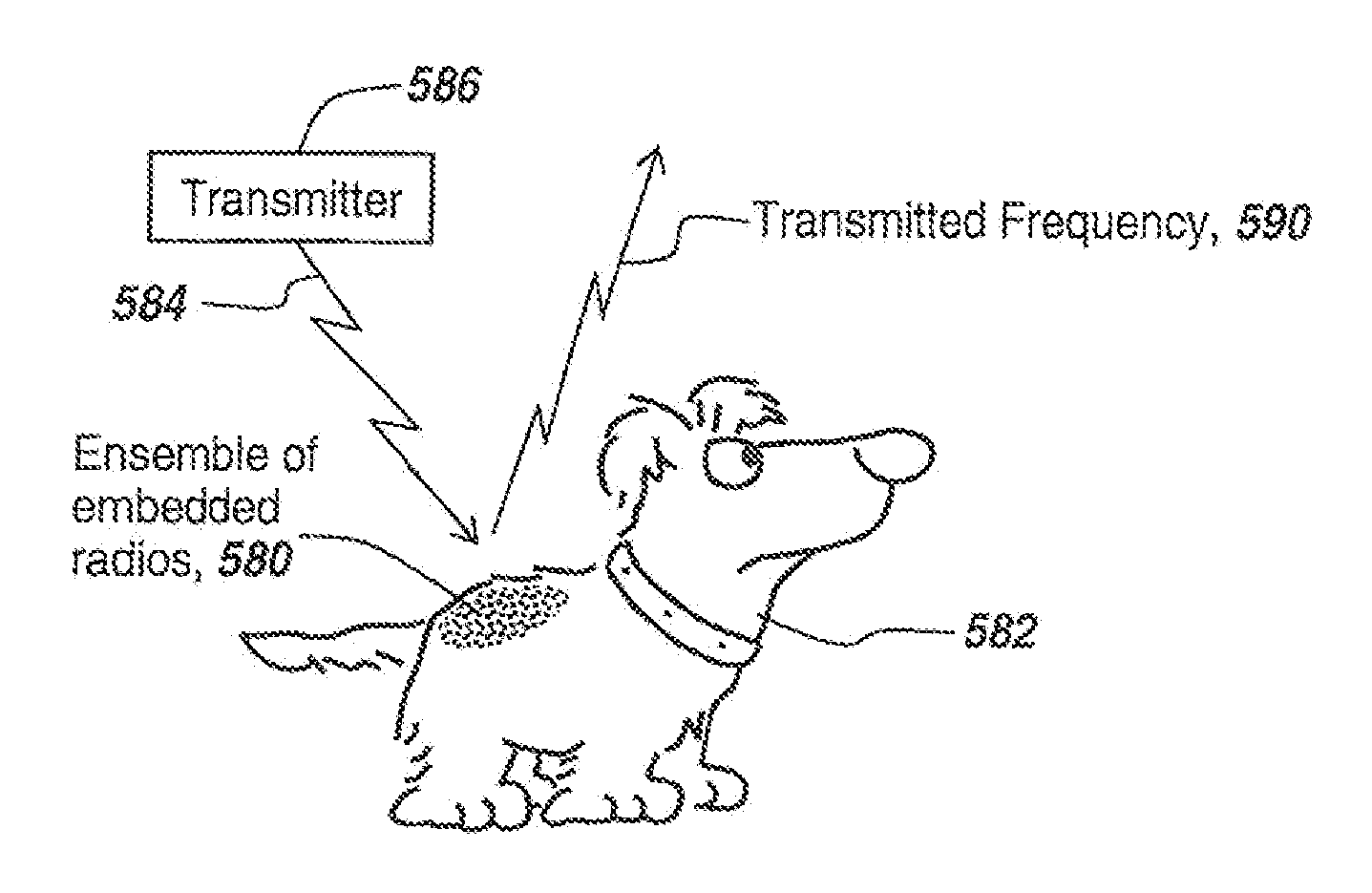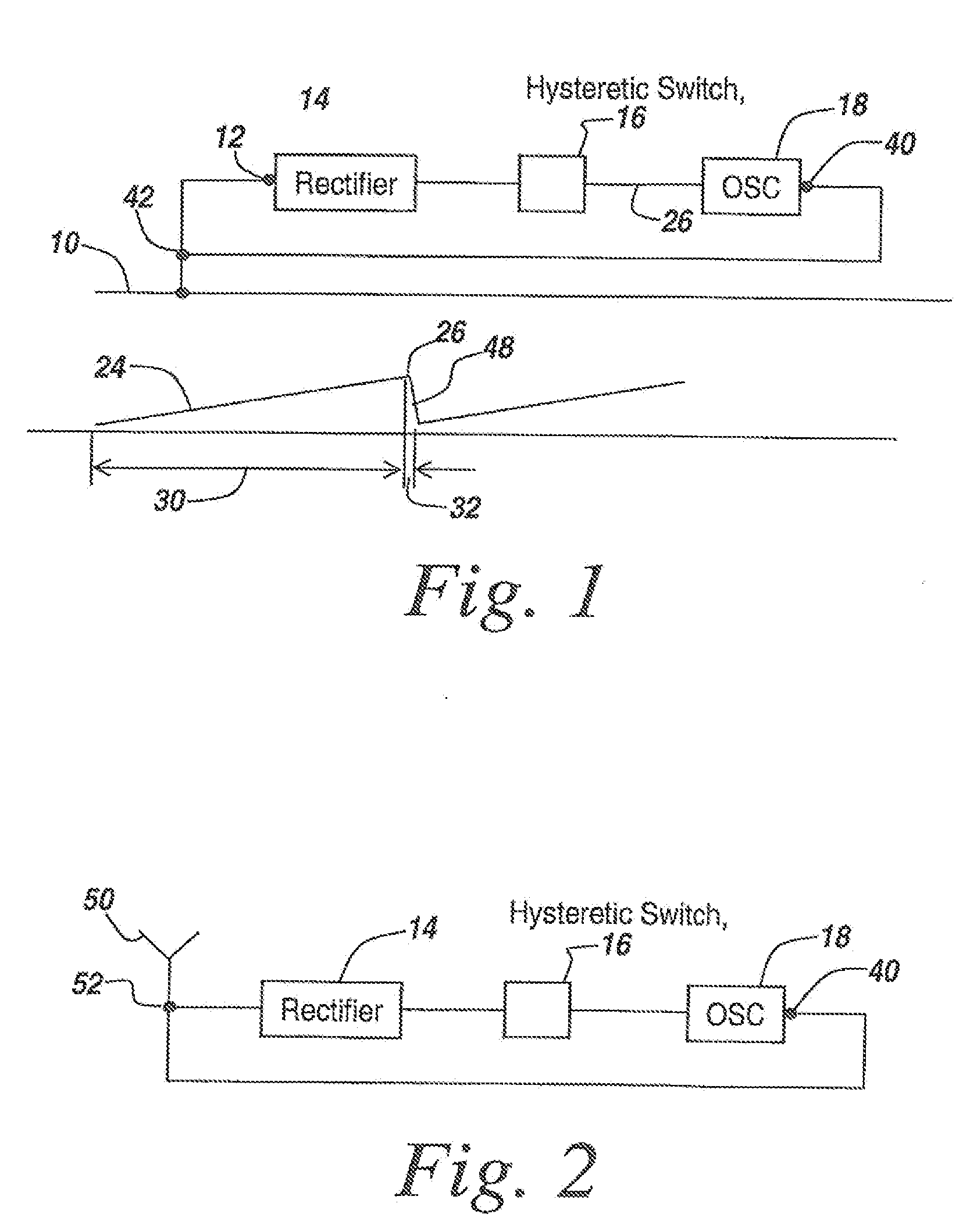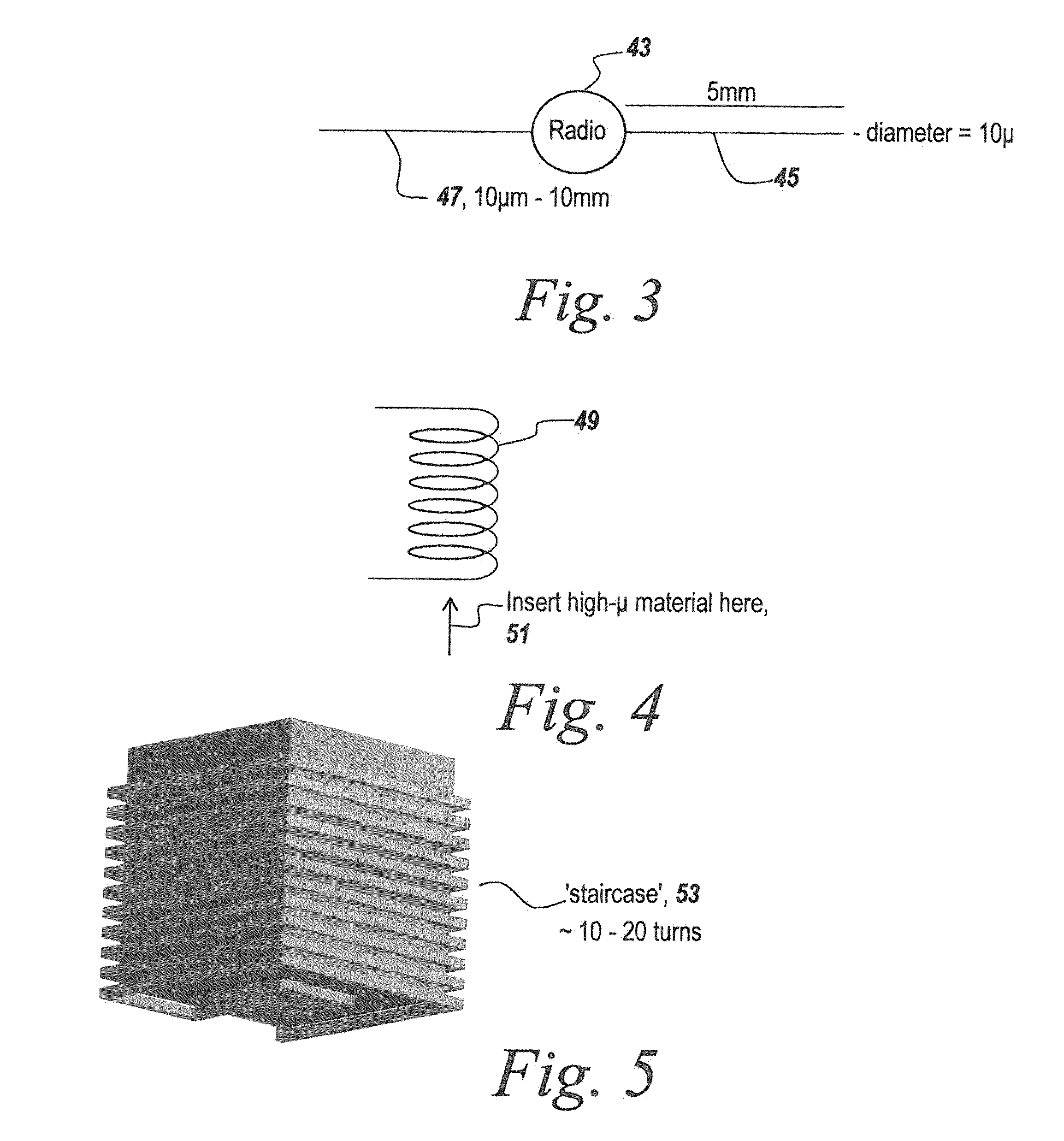Method of tracking a container using microradios
a container and microradio technology, applied in the field of microradios, can solve the problems of prohibitively large size of miniature radios, relatively long charging time available, and insufficient size, and achieve the effects of less costly, cost effective, and convenient us
- Summary
- Abstract
- Description
- Claims
- Application Information
AI Technical Summary
Benefits of technology
Problems solved by technology
Method used
Image
Examples
Embodiment Construction
[0083]Referring now to FIG. 1 and prior to discussing applications of microradios, in its simplest configuration the radio is parasitically coupled to the environment through a connection to a metal or dielectric structure that functions as a naturally radiating structure, here illustrated at 10. The microradio has an input 12 coupled to structure 10, at which point a rectifier 14 rectifies RF energy or optical energy to be able to power a radio through a hysteretic switch 16 coupled between the rectifier and an oscillator 18. As will be described, oscillator 18 will transmit an information-bearing waveform. A variety of analog and digital modulations may be employed, including frequency modulation (FM), amplitude modulation (AM), binary phase shift key (BPSK) and binary frequency shift key (BFSK), among other possibilities.
[0084]It is the purpose of hysteretic switch 16 to toggle the power from rectifier 14 to oscillator 18. In one embodiment, the output of oscillator 18 is an enco...
PUM
| Property | Measurement | Unit |
|---|---|---|
| charge time | aaaaa | aaaaa |
| charge time | aaaaa | aaaaa |
| length | aaaaa | aaaaa |
Abstract
Description
Claims
Application Information
 Login to View More
Login to View More - R&D
- Intellectual Property
- Life Sciences
- Materials
- Tech Scout
- Unparalleled Data Quality
- Higher Quality Content
- 60% Fewer Hallucinations
Browse by: Latest US Patents, China's latest patents, Technical Efficacy Thesaurus, Application Domain, Technology Topic, Popular Technical Reports.
© 2025 PatSnap. All rights reserved.Legal|Privacy policy|Modern Slavery Act Transparency Statement|Sitemap|About US| Contact US: help@patsnap.com



